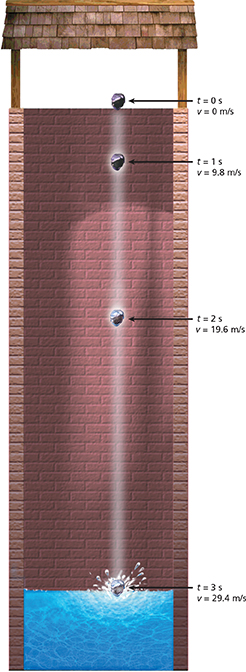Changes in Speed
We often use the word acceleration to describe situations in which the speed of an object is increasing. A television newscaster describing the liftoff of a rocket-launched space shuttle, for example, might exclaim, “That shuttle is really accelerating!” We understand that the newscaster is describing the spacecraft's quickly increasing speed as it clears its launch pad and rises through the atmosphere. Scientifically, however, acceleration applies to any change in an object's velocity. This change may be either an increase or a decrease in speed. Acceleration can be caused by positive (increasing) change in speed or by negative (decreasing) change in speed.
For example, suppose that you are sitting on a bus waiting at a stoplight. The light turns green and the bus moves forward. You feel the acceleration as you are pushed back against your seat. The acceleration is the result of an increase in the speed of the bus. As the bus moves down the street at a constant speed, its acceleration is zero. You no longer feel pushed toward your seat. When the bus approaches another stoplight, it begins to slow down. Again, its speed is changing, so the bus is accelerating. You feel pulled away from your seat. Acceleration results from increases or decreases in speed. As the bus slows to a stop, it experiences negative acceleration, also known as deceleration. Deceleration is an acceleration that slows an object's speed.
An example of acceleration due to change in speed is free fall, the movement of an object toward Earth solely because of gravity. Recall that the unit for velocity is meters per second. The unit for acceleration, then, is meters per second per second. This unit is typically written as meters per second squared (m/s2). Objects falling near Earth's surface accelerate downward at a rate of 9.8 m/s2. Each second an object is in free fall, its velocity increases downward by 9.8 meters per second. Imagine the stone in Figure 12 falling from the mouth of the well. After 1 second, the stone will be falling at about 9.8 m/s. After 2 seconds, the stone will be going faster by 9.8 m/s. Its speed will now be downward at 19.6 m/s. The change in the stone's speed is 9.8 m/s2, the acceleration due to gravity.
Figure 12 The velocity of an object in free fall increases 9.8 m/s each second.





